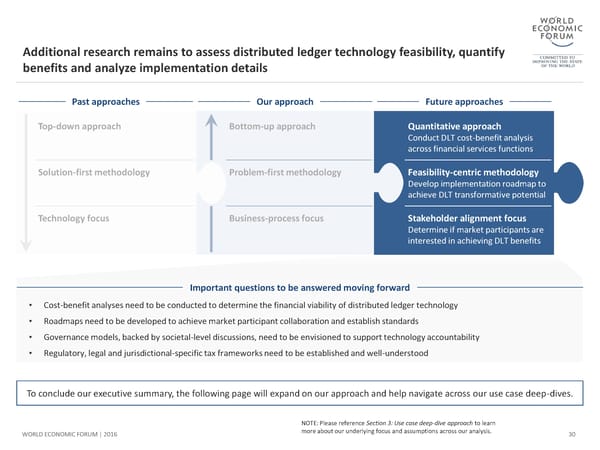Additional research remains to assess distributed ledger technology feasibility, quantify benefits and analyze implementation details Past approaches Our approach Future approaches Top-down approach Bottom-up approach Quantitative approach Conduct DLT cost-benefit analysis across financial services functions Solution-first methodology Problem-first methodology Feasibility-centric methodology Developimplementation roadmap to achieve DLT transformative potential Technology focus Business-process focus Stakeholder alignment focus Determine if market participants are interested in achieving DLT benefits Important questions to be answered moving forward • Cost-benefit analyses need to be conducted to determine the financial viability of distributed ledger technology • Roadmaps need to be developed to achieve market participant collaboration and establish standards • Governance models, backed by societal-level discussions, need to be envisioned to support technology accountability • Regulatory, legal and jurisdictional-specific tax frameworks need to be established and well-understood To conclude our executive summary, the following page will expand on our approach and help navigate across our use case deep-dives. NOTE: Please reference Section 3: Use case deep-dive approach to learn WORLD ECONOMIC FORUM | 2016 more about our underlying focus and assumptions across our analysis. 30
 The Future of Financial Infrastructure Page 29 Page 31
The Future of Financial Infrastructure Page 29 Page 31